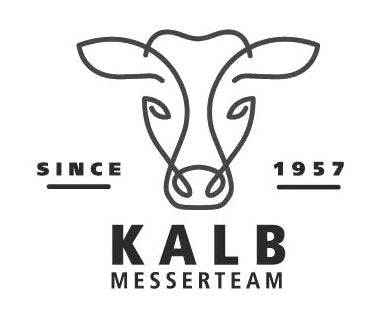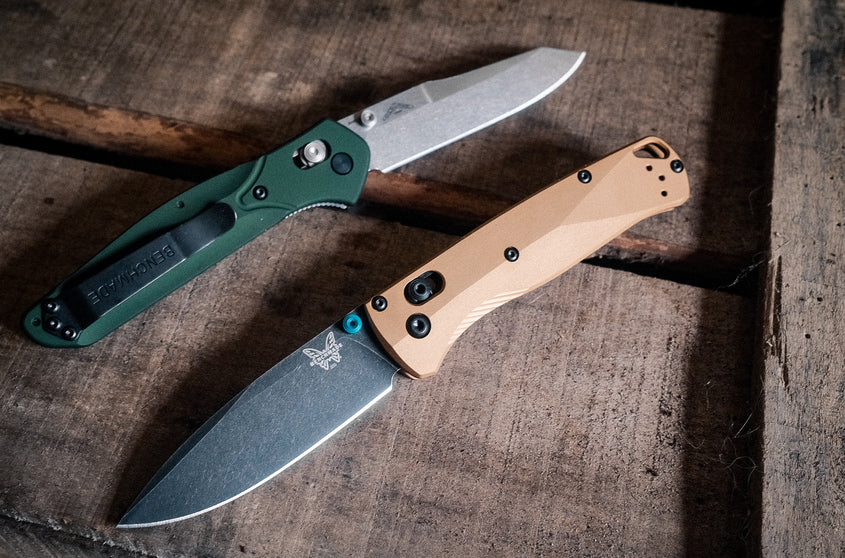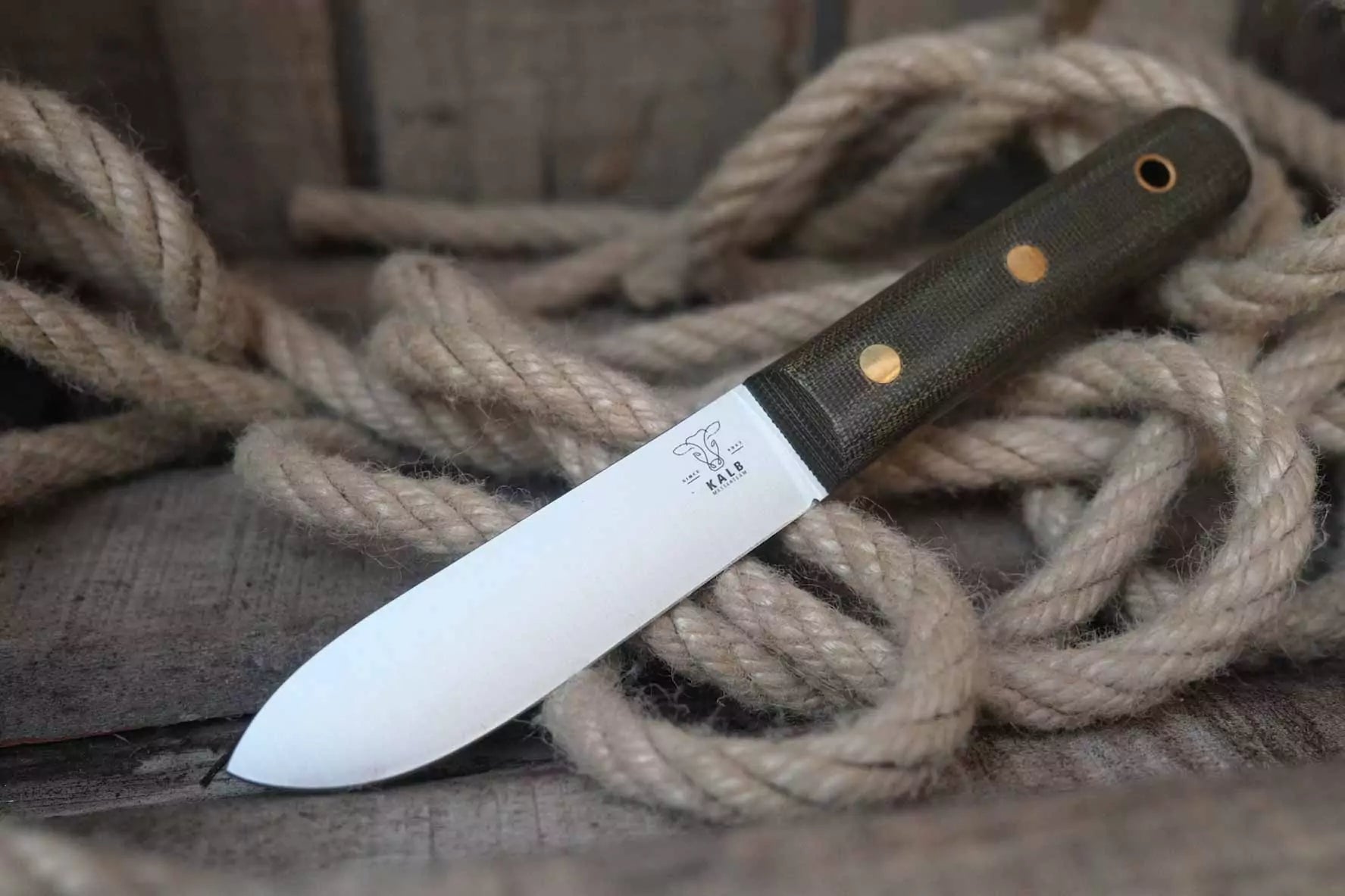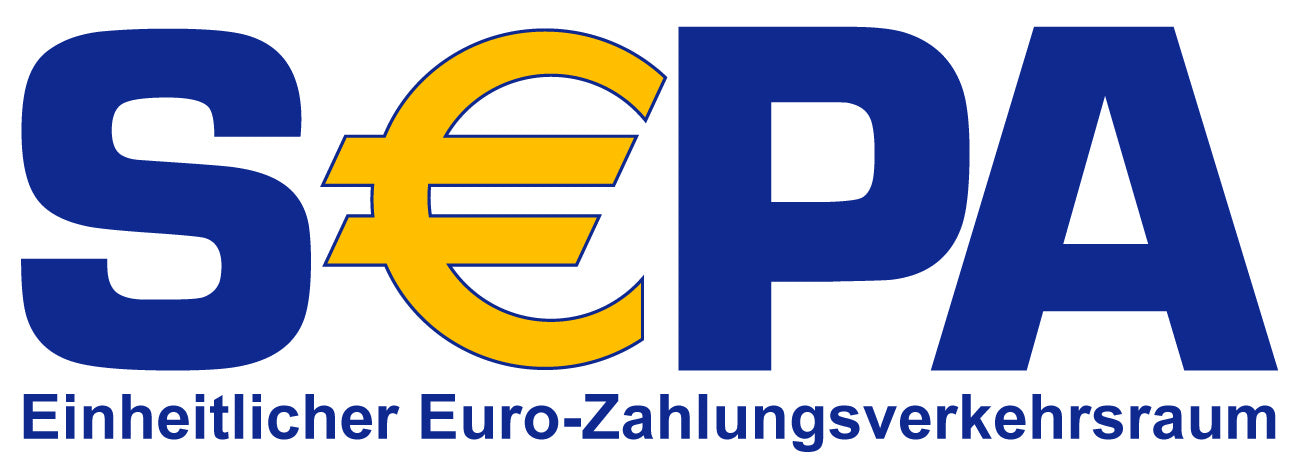WHICH IS THE BEST MORA KNIFE?
Mora, or Morakniv (pronounced: ˈmuːra.ˈkniːf), is not just any cheap DIY store knife that you can buy for under ten euros at your nearest home improvement store. Well, yes, it is, because that's ultimately what Mora is known for: inexpensive, good work tools . But the history and tradition behind Mora is much deeper than one might initially suspect. Let's start with the name: Mora is not only the name of the company behind the knife, but Mora is a place in the heart of Sweden, the Solingen of the North, if you will, where various knife manufacturers, mainly small workshops and family businesses, have been based for over 400 years.
At the beginning of the 20th century, the companies grew, and manufacturers such as AB Carl Anderssons Knivfabrik, AB Moraknivar, Bröderna Jönssons, Frosts or KJ Erikssons made a name for themselves internationally. From the middle of the last century, the manufacturers, who all produced very similar types of knives (the classic Mora with a round birch wood handle and red color is iconic here), gradually began to merge, until Morakniv, as we know it today, emerged from all the business mergers in 2005.
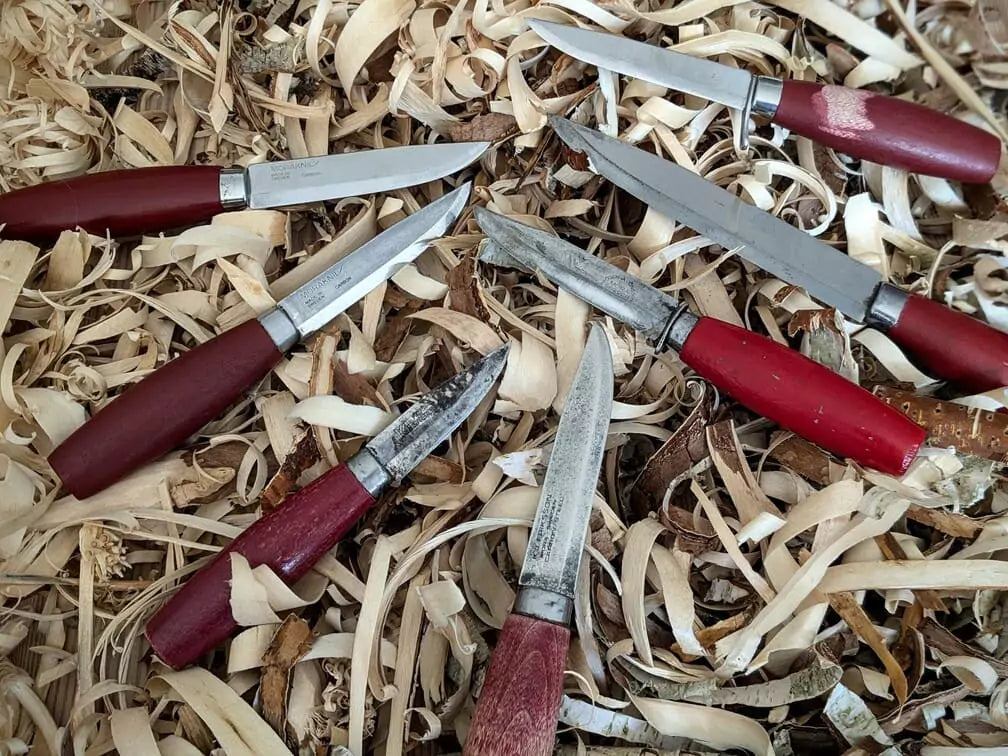
MORALS IN THE 21ST CENTURY
Mora is today one of the best-known and largest knife manufacturers worldwide. As a knife and outdoor enthusiast, you can't ignore this name, and for good reason: Mora knives are renowned for being robust, capable, and versatile , yet affordable for every budget. The good people at Morakniv listen to customer feedback and constantly develop new models and variations.
Anyone wanting to buy a Mora knife today can easily be overwhelmed by the large product range and rightly wonders which is the best Mora knife . This article aims to introduce you to the best-known and most popular Mora knives for outdoor and bushcraft use and to highlight the fundamental differences between the individual models. All the knives presented here are user-tested and have served me well for many years.
- The all-rounder -
MORA COMPANION
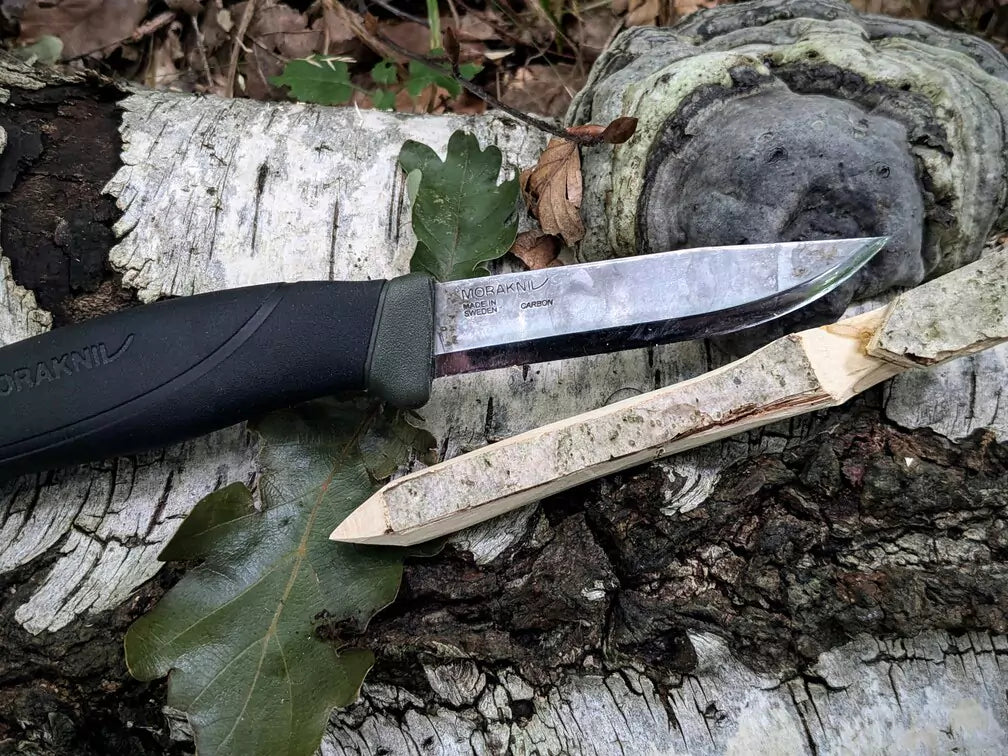
The Mora Companion is the perfect all-rounder and a true classic in the Mora lineup. As the successor to the Mora Clipper (which outdoor enthusiasts among you probably know in the form of the Bauhaus and Bahco knives – especially in the combination package with the Bahco Laplander saw), the Companion is now considered a modern classic, a bestseller, and probably THE most popular Mora knife.
The Companion is available in two versions: Carbon (until approx. 2022 declared as C100) and Stainless (until approx. 2022 declared as Sandvik 12C27), whereby the Carbon version with a blade thickness of 2 mm is slightly thinner than the Stainless version (2.5 mm). The spine of the blade is rounded, so you can't strike a ferro rod with it – but this offers more comfort when resting your thumb on it. And if it bothers you: With a file, the spine of the blade can be made sharp-edged in a few minutes. The Companion cuts through wood like butter and is ideal for carving, but is also an excellent choice for various bushcraft tasks such as preparing firewood, harvesting birch bark, slicing cucumbers or impaling mosquitoes. Due to the virtually non-existent weight, there is no excuse not to have this knife with you outdoors.
- Carving
- Hiking
- Bushcraft
- Craftsmanship
- Everyday tasks
- Light and heavy work
- Blade length: 104 mm
- Blade thickness: 2.5 mm Stainless / 2 mm Carbon
- Total knife length: 219 mm
- Total length of knife with sheath: 240 mm
- Weight: 117.0 g Stainless steel / 110.0 g Carbon
- Steel: Carbon/Stainless
- Fire steel compatible: No
- Handle material: TPE rubber
- Handedness: For left- and right-handed users
- Blade protection: Polymer sheath
- Vagina orientation: Right
- The Robust One -
MORA COMPANION HD
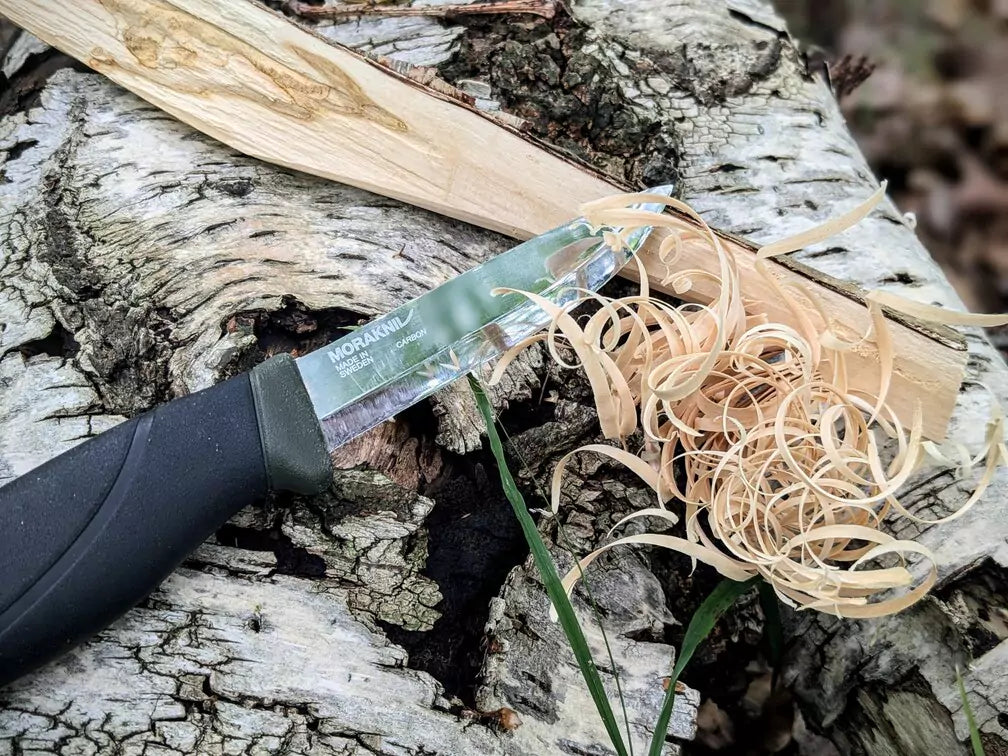
The Mora Companion HD is the bigger brother of the standard Companion and differs mainly in two aspects: the blade thickness (3.2 mm vs. 2.5 mm or 2 mm for the Companion Stainless and Carbon) and the thickness and length of the handle. The blade length is identical to that of the standard Companion. This knife is excellently suited for larger hands and – at least for my delicate paws – fits extremely well in the hand. Even hours of work are comfortable with it, without creating hotspots on the hands. Despite the fact that the Companion HD is not full-tang, it is still very robust and withstands some heavier use effortlessly. For the price and weight, the Companion HD is, in my opinion, more knife than one could wish for and belongs in every knife drawer – not just for bushcrafters.
- Carving
- Hiking
- Bushcraft
- Craftsmanship
- Everyday tasks
- Light and heavy work
- Blade length: 104 mm
- Blade thickness: 3.2 mm (both stainless steel and carbon)
- Total knife length: 224 mm
- Total length of knife with sheath: 240 mm
- Weight: 135.0 g
- Steel: Carbon/Stainless
- Fire steel compatible: No
- Handle material: TPE rubber
- Handedness: For left- and right-handed users
- Blade protection: Polymer sheath
- Vagina orientation: Right
- The Bushcrafter -
MORA BUSHCRAFT BLACK
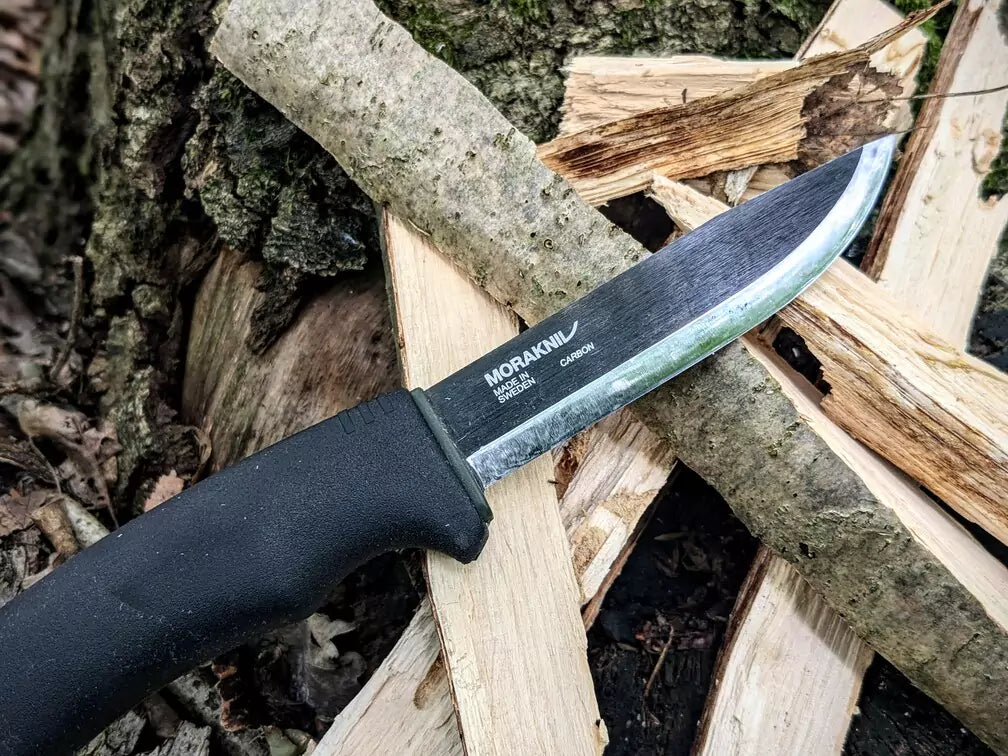
The Mora Bushcraft Black was long considered Mora's prestige bushcraft knife before the Garberg came along. The Bushcraft is available in numerous versions (some, like the Bushcraft Triflex, are now discontinued), but the Black variant with coated carbon steel and a 90° spine is the most popular. Personally, I prefer the handle of the Kansbol or Garberg, as I don't particularly like pre-formed finger grooves, but many swear by the comfort of the Mora Bushcraft handle . The all-rubberized grip provides absolutely divine hold.
The tang isn't full-length (so it's not a full-tang knife, should that be a deal-breaker) – but it's still robust, and you'd have to try really hard, like Joe X, to break this thing. Due to the special injection molding of the tang into the plastic, Mora knives are generally very robust and durable, and this positively impacts the weight of the Bushcraft Black: For a bushcrafter, it's extremely lightweight and practically unnoticeable in a backpack or on a belt.
- Hiking
- Bushcraft
- Outdoor
- Light and heavy work
- Blade length: 109 mm
- Blade thickness: 3.2 mm
- Blade length: 232 mm
- Total length: 258 mm
- Weight (Net): 174.6 g
- Steel: Carbon (coated)
- Fire steel compatible: Yes
- Handedness: For left- and right-handed users
- Blade protection: Polymer sheath
- Vagina orientation: Right
- The Versatile One -
MORA KANSBOL
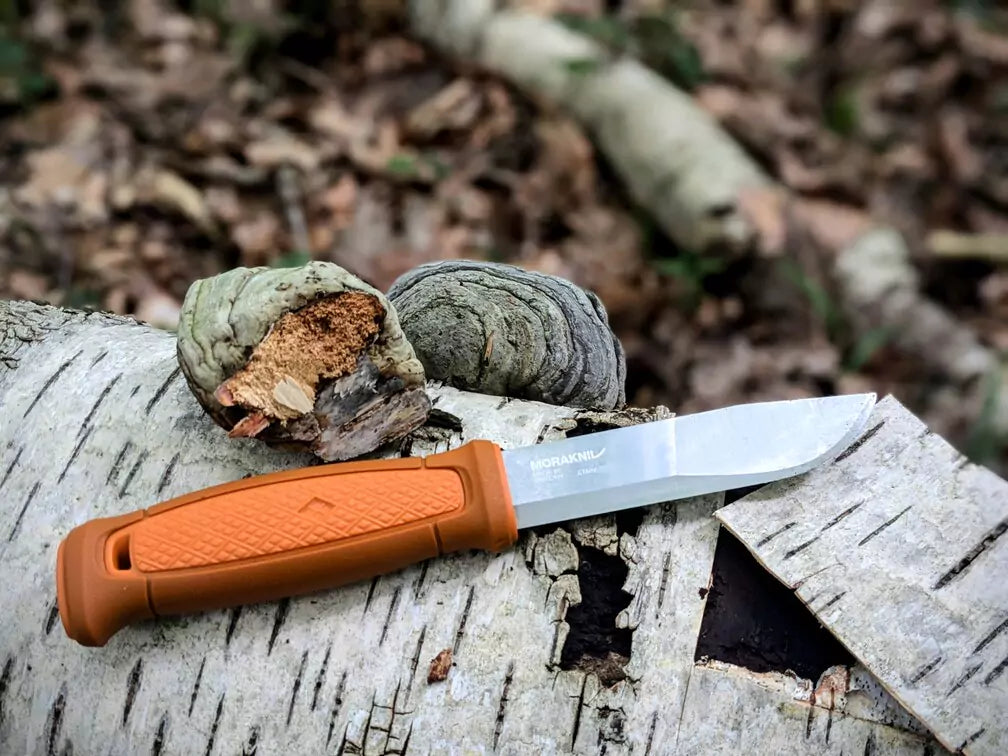
2016 was a good year for the outdoor community. It was the year Mora released three of its most successful knives: the Mora Kansbol , the Garberg, and the Eldris (more on the latter two below). With its barrel-shaped handle, the Kansbol is clearly inspired by the classic red birch wood handles of the original Moras and is excellently suited for any grip technique. Whether using a hammer grip, reverse grip, or chest lever – this grip is always comfortable, and the rubberized upper and lower edges ensure a non-slip hold.
But the most obvious feature of this knife is probably the so-called compound grind , which we already know from the Mora 2000, which made its debut in the 1990s. While the blade near the handle is a classic Scandi grind and provides excellent carving properties there, the tip of the blade tapers towards the front, and the Scandi grind transitions into a kind of flat grind with a high cutting edge. Since this question comes up frequently: the sharpening angle remains constant ! Sharpening this model is therefore not rocket science. Due to the thin blade thickness of 2.5 mm (tapering towards the front), this knife is extremely sharp, and the front grind also makes it well suited for food preparation. In contrast to the Mora 2000 or Bushcraft Forester, the Kansbol has a 90° spine and sparks like crazy. The Kansbol is one of my all-time favorites and a true all-rounder for hiking, bushcrafting and being outdoors.
- Carving
- Hiking
- Bushcraft
- Camping kitchen
- Hunting (?)
- Blade length: 109 mm
- Blade thickness: 2.5 mm
- Blade length: 226 mm
- Total length: 250 mm
- Weight: 134.0 g
- Steel type: Recycled stainless steel from Sweden
- Fire steel compatible: Yes
- Handle material: TPE rubber
- Handedness: For left- and right-handed users
- Blade protection: Polymer sheath
- Vagina orientation: Left, Right
- The Survivalist -
MORA GARBERG
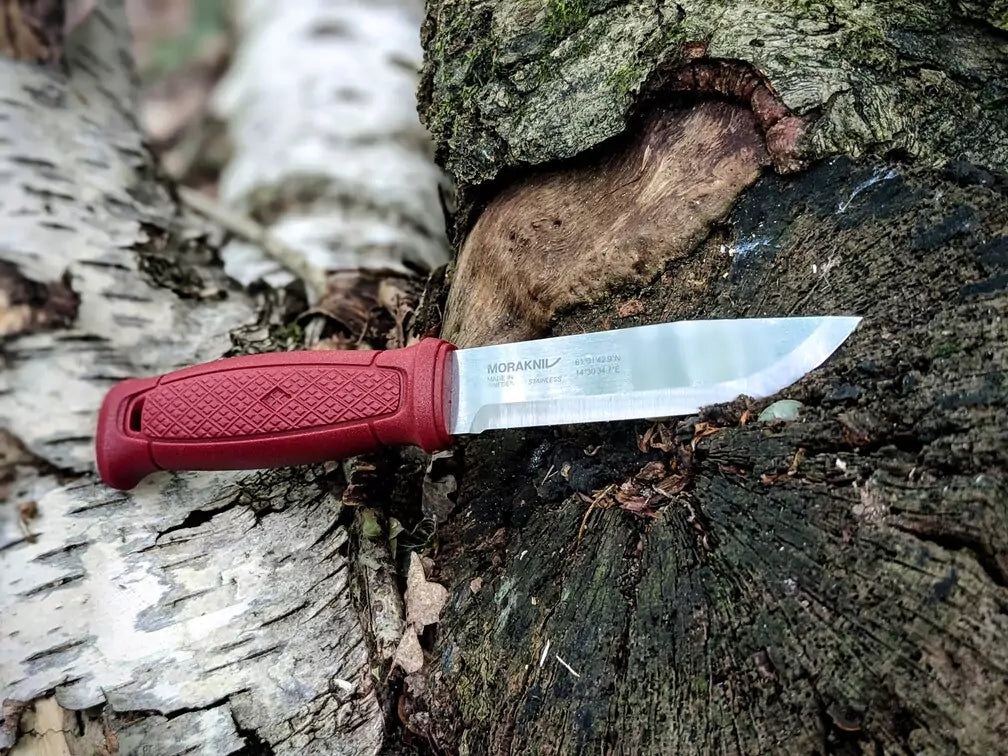
The Mora Garberg , released in 2016, was the logical answer to the scene's outcry for full-tang construction and survival capabilities. Until the Ashwood series, the Garberg was Mora's only full-tang knife, and it hit the outdoor scene like a comet. To this day, it's considered one of the most popular knives for bushcraft and outdoor activities. The handle is very similar to that of the Kansbol, except that the Garberg's handle is made entirely of hard plastic without rubber coating. However, this doesn't detract from its comfort and performance. This knife feels massive in the hand and exudes a confidence as if it could chop through any stubborn hardwood.
The Garberg is available in carbon (with black coating) and stainless steel , with polymer and leather sheaths, with and without the Multimount system. The price point is higher here than with the popular Companion, but the extra cost pays off in terms of stability and build quality.
- Bushcraft
- Survival
- Carving
- Hard work
- Blade length: 109 mm
- Blade thickness: 3.2 mm
- Blade length: 229 mm
- Total length: 242 mm
- Weight: 207.0 g
- Steel type: Recycled stainless steel from Sweden
- Fire steel compatible: Yes
- Handle material: Polyamide
- Handedness: For left- and right-handed users
- Blade protection: Polymer sheath
- Vagina orientation: Left, Right
– The Fire Devil –
MORA EDLRIS
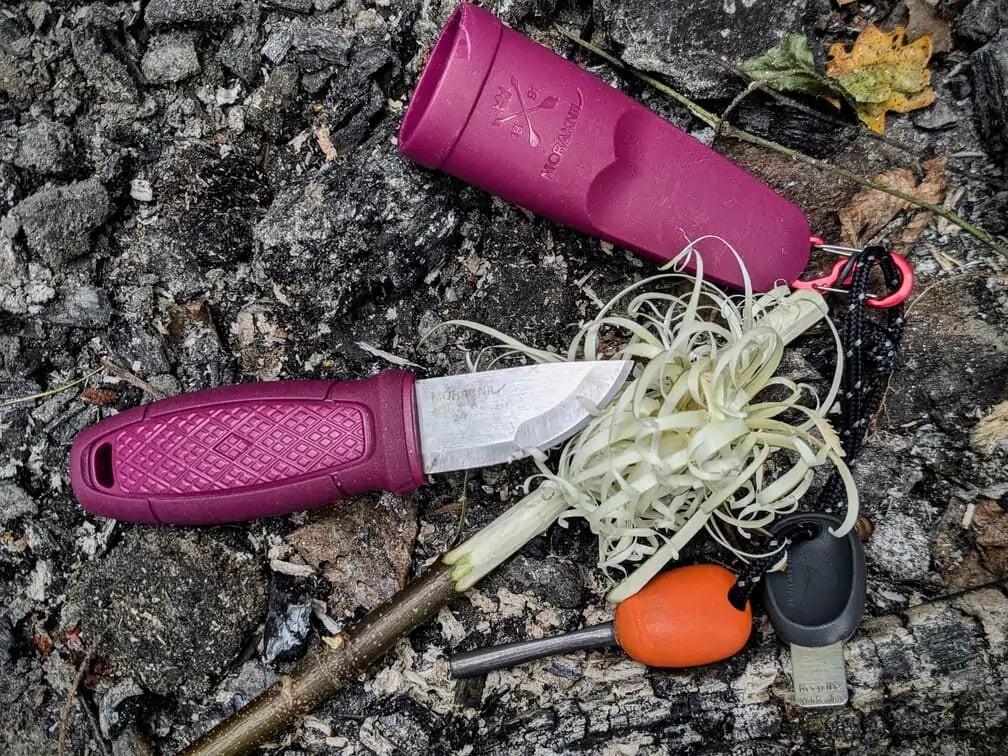
The Mora Eldris is a handy little companion and Morakniv's answer to the community's request for a pocket knife. The handle is designed according to the same principle as the Kansbol and Garberg, and despite its significantly more compact dimensions, the Eldris (at least with a glove size 10) fits just as comfortably and excellently in the hand as its larger brothers. The Eldris is available in two versions: the standard version with a compound grind (cf. Kansbol) and a light-duty version with a full Scandi grind and a rounded spine. The standard version of the Eldris is available individually or as a neck knife fire kit, the latter including a lanyard, a fire steel, and a neck strap. This allows the Eldris to be safely worn upside down as a neck knife.
The fire steel and the name "Fire-Kit" directly indicate the preferred application area of the Mora Eldris: making fire. With its 90° spine, the Eldris sparks just as gloriously as the Kansbol and the Garberg – however, the short blade allows for much more control, while the comfortable grip makes it significantly easier to handle than commercially available fire steel scrapers (even if the Light My Fire one is already very good). Like every other Mora knife, the Eldris is a little cutting devil, although the short blade is naturally less suitable for longer cutting movements than, for example, the Companion. You won't halve a watermelon with the Eldris. However, for carving notches, scraping tinder, and making fire, the Eldris is the king of campfires. The advantages of the Eldris in this respect are difficult to convey – you simply have to try it.
Note : The Light Duty version comes with a rounded blade back and is therefore not inherently suitable for striking fire steels!
You can buy the Mora Eldris here in our shop .
By the way : You can also find the Light My Fire fire starters in our shop.
- Bushcraft
- Make a fire.
- Carving
- Light work
- Blade length: 59 mm
- Blade thickness: 2 mm
- Blade length: 145 mm
- Total length: 153 mm
- Weight: 80 g
- Steel type: Recycled stainless steel from Sweden
- Fire steel compatible: Yes
- Handle material: TPE rubber
- Handedness: For left- and right-handed users
- Blade protection: Polymer sheath
- Vagina orientation: Left, Right
If you want to learn more about the history of Morakniv, I highly recommend the historical catalogs on the Mora website (see sources below) as well as the Mora blog by Mora enthusiasts and experts João. If you are generally interested in outdoor knives, we have created an outdoor knife guide here.
Discover a wide selection of Mora knives in our shop .
Sources:
https://morakniv.se/en/this-is-morakniv/our-history/, accessed: 13.07.2024
https://morakniv.se/en/this-is-morakniv/historical-catalogs/, accessed: 13.07.2024
*All information according to product details on https://morakniv.se/en/, last visited on 13.07.2024.
